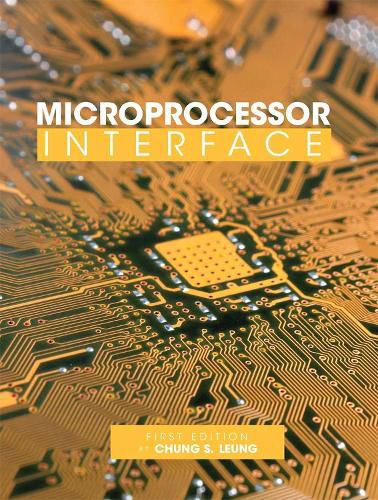Readings Newsletter
Become a Readings Member to make your shopping experience even easier.
Sign in or sign up for free!
You’re not far away from qualifying for FREE standard shipping within Australia
You’ve qualified for FREE standard shipping within Australia
The cart is loading…






This title is printed to order. This book may have been self-published. If so, we cannot guarantee the quality of the content. In the main most books will have gone through the editing process however some may not. We therefore suggest that you be aware of this before ordering this book. If in doubt check either the author or publisher’s details as we are unable to accept any returns unless they are faulty. Please contact us if you have any questions.
Microprocessor Interface uses a step-by-step explanation and clear illustrations to explain how to implement a microprocessor interface and develop a robotic project. Based on real classroom experiences and projects, the text shares knowledge and experience rooted in real-world student implementation.
Part I of the text addresses foundational ideas in microprocessor interface, such as working with character-based LCDs and how to linearize a GP2Y0A02 IR sensor with an 8-bitATD conversion. In Part II the focus is on robotics. Students learn how to control a servo motor and choose a chassis. Both Parts I and II feature a variety of projects that allow students to immediately apply what they have learned. Part III is composed of eleven microprocessor labs on topics such as conditional flags and rotate instruction, bit testing and manipulation, and siren generation.
Developed and organized to fully support students as they complete projects, Microprocessor Interface can be used in laboratory classes that accompany microprocessor systems I and II courses, or any class devoted to autonomous robots or microprocessor interface studies.
$9.00 standard shipping within Australia
FREE standard shipping within Australia for orders over $100.00
Express & International shipping calculated at checkout
This title is printed to order. This book may have been self-published. If so, we cannot guarantee the quality of the content. In the main most books will have gone through the editing process however some may not. We therefore suggest that you be aware of this before ordering this book. If in doubt check either the author or publisher’s details as we are unable to accept any returns unless they are faulty. Please contact us if you have any questions.
Microprocessor Interface uses a step-by-step explanation and clear illustrations to explain how to implement a microprocessor interface and develop a robotic project. Based on real classroom experiences and projects, the text shares knowledge and experience rooted in real-world student implementation.
Part I of the text addresses foundational ideas in microprocessor interface, such as working with character-based LCDs and how to linearize a GP2Y0A02 IR sensor with an 8-bitATD conversion. In Part II the focus is on robotics. Students learn how to control a servo motor and choose a chassis. Both Parts I and II feature a variety of projects that allow students to immediately apply what they have learned. Part III is composed of eleven microprocessor labs on topics such as conditional flags and rotate instruction, bit testing and manipulation, and siren generation.
Developed and organized to fully support students as they complete projects, Microprocessor Interface can be used in laboratory classes that accompany microprocessor systems I and II courses, or any class devoted to autonomous robots or microprocessor interface studies.